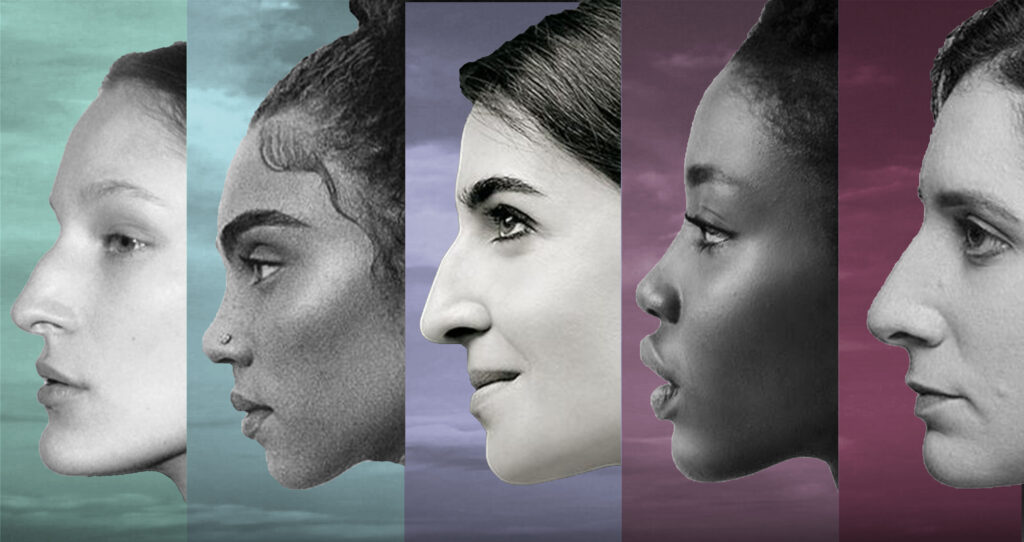
I was 12 years old when I first considered getting cosmetic surgery. Distraught over a snide remark from a school bus bully about my prominent nose, I sat at the family computer and googled “nose jobs,” the colloquial term for a surgery called rhinoplasty. Rhinoplasty alters the shape and structure of the nose. Upon diving into several plastic surgeons’ websites, I discovered “before and after” pictures of people who had undergone the surgery. An array of strong noses across people of different ethnicities were made smaller, straighter and narrower. I recall the websites mentioning “facial harmony”, i.e., correcting a large nose so that the face would be deemed harmonious and proportionate. Smaller, upturned noses were termed “celestial” (heavenly), while more distinct noses were assigned to categories such as “fleshy”.
This led me on a quest to understand rhinoplasty in American culture from a deeper perspective than the binary of shaming those who have had surgery and encouraging the surgery itself. Just why, I wondered, is a smaller, straighter nose more “harmonious” than a larger or bridged one? Who decided that? I thought of my mother and grandmother, two of the women I loved most and found beautiful, proudly wearing the same Mediterranean nose as I. Why couldn’t I accept myself the way I accepted them?
My journey of researching rhinoplasty made me realize that the beauty standard of “celestial” noses has roots far deeper than the critique of my individual nose as a white person. The language around rhinoplasty is highly racialized. The idealized American nose is reminiscent of, more specifically, an Anglo-American person’s nose. Before 1970, “ethnic” rhinoplasties were performed on mostly second-generation European American people, such as Italians, Germans and Russians, to look more Americanized (implying that “American” means Anglo-American). As more people of color started getting rhinoplasties, the term “ethnic” grew to encompass anyone outside of the Anglo-European standard and, in our society today, mainly encompasses people of color. I want to acknowledge my privilege that, while I have felt social pressure to change my nose, I do not face the pain that comes from having an ethnic identity disparaged in the name of beauty standards.
The American Society of Plastic Surgeons officially terms rhinoplasties performed on non-white people “ethnic cosmetic surgery,” othering non-white noses with their own category name.
Sociologist Alka Menon writes, “Surgeons develop an expert discourse on race and gender that is simultaneously about difference and beauty. The development of ‘ethnic’ specific cosmetic surgery standards enshrines a ‘white’ default referent even as it opens the door to other configurations of physical appearance.”
In response, people who don’t fit the Eurocentric rhinoplasty definition of an ideal nose are speaking out against the falsehood that one nose shape is less beautiful and valuable than another.
In an article for Teen Vogue, freelance writer Brooklyn White discusses how she learned to fall in love with her facial features and describes her inspiration from Nina Simone. She wrote:
“In a 2012 interview with the New York Times, Nina’s daughter, Lisa Simone, stated, ‘My mother was raised at a time when she was told her nose was too wide, her skin was too dark.’ I, personally, found beauty in her features. It’s why I couldn’t stand behind the 2016 film Nina. It erased her instantly recognizable features, visually toying with her legacy. I’m able to ignore that misstep because I know how proud Nina was of being black. She once again showed me that I don’t have to even think about changing.”
One Instagram influencer, @barbiesclutter, highlights the beauty of Middle Eastern people’s noses and speaks out about her own battles with insecurity over her nose. Other Instagram accounts, such as @bignosebaddies and @bignosechick, showcase photos sent in by followers with noses of all shapes and sizes.
Although plastic surgeons and American culture may herald a whiter nose as a better one, that is most certainly not the case. It is worth considering that America’s longstanding history of racism informs how we see beauty, and when we recognize that, we can help ourselves and others find confidence in themselves and their appearance.
